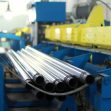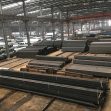Shading coefficient of glass curtain wall
The thermal performance of glass curtain wall is characterized by shading coefficient and heat transfer coefficient, while the heat transfer coefficient of stone curtain wall and aluminum curtain wall is only used to characterize the thermal performance of non-transparent curtain wall. To maximize the thermal performance of the curtain wall, what are the expected shading and heat transfer coefficients? Obviously, the smaller the shading coefficient of glass curtain wall, the better, because the decrease of the shading coefficient of glass must be accompanied by the decrease of the visible light transmittance of glass to varying degrees. Too small visible light transmittance of glass will not only increase the indoor lighting energy consumption, but also affect the indoor comfort of buildings.
In addition, the shading coefficient of glass curtain wall has a positive effect in summer, which will significantly reduce the energy consumption of building air conditioning, but a negative effect in winter, which will increase the energy consumption of building heating, because the sunlight entering the room through glass is reduced in winter. Even for areas with no heating requirements, getting as much sunlight into the room as possible during the winter months will increase comfort. Therefore, for any climate zone, the shading coefficient of curtain glass window is not as small as possible, but moderate is its expected value. What about the heat transfer coefficient? What are his expectations? In summer, buildings with refrigeration requirements only have air-conditioning energy consumption. As long as the building air conditioning is started, the outdoor is the hot end and the indoor is the cold end. The existing heat is transferred from the outdoor to the indoor through the curtain wall structure, and its size is proportional to the heat transfer coefficient of the curtain wall. The smaller the heat transfer coefficient is, the less the heat from the outdoor to the indoor through the curtain wall is, and the smaller the energy consumption of air conditioning is. In winter, buildings with heating requirements only have heating energy consumption.
As long as the building heating system is started, the outdoor is the cold end, the indoor is the hot end, the existing heat is transferred from the indoor to the outdoor through the building curtain wall, and its size is proportional to the heat transfer coefficient of the commercial curtain wall. The smaller the heat transfer coefficient is, the less heat stars are transmitted from the indoor to the outdoor through the curtain wall, and the smaller the heating energy consumption is. Therefore, for any climate zone, the smaller the heat transfer coefficient of the building curtain wall, the better the energy saving effect.
Tel: +86 18202256900 Email: steel@tjdpbd.com









